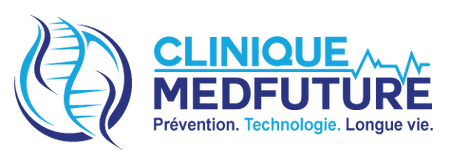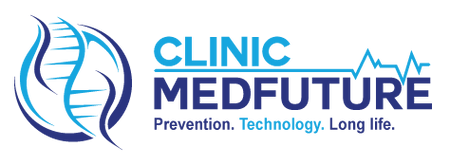Part 2: The influence of telomerase on telomeres and aging

The influence of telomerase on telomeres and aging
Accelerated aging due to telomerase mutations
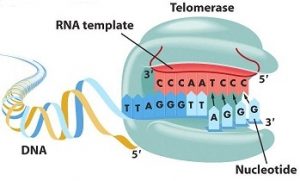
Telomerase is the enzyme responsible for synthesizing telomeres. It causes the addition of TTAGGG repeats to the chromosomal ends and allows the telomere to be reconstituted. It consists of a protein subunit, TERT (Telomerase reverse transcriptase), which is responsible for telomere synthesis, and an RNA subunit, TERC (Telomerase RNA component), which is used as a template for synthesis [1].
Various studies have been conducted on mice that no longer have the gene encoding the TERC subunit. The aim was to determine the impact of telomere shortening on the aging process and on the development of cancer. It was found that in the absence of this gene, the long-term viability of these mice was severely compromised [2]. In the group of mice that survived, many symptoms associated with the loss of telomeric repeats were observed: loss of fertility, heart failure, immuno-senescence (a progressive deterioration of the immune system caused by the aging process), a decrease in the rate of renewal of the cells of the digestive system, the skin and the haematopoietic system (the system that renews the blood cells present in the blood)... [2] All these symptoms generally appear with age and confirm the link between aging and telomerase dysfunction.
Telomeres as well as telomerase seem to have an impact on the aging process. Indeed, it has been observed that mutations, affecting any component of telomerase, lead to disorders such as dyskeratosis congenita, aplastic anemia, myelodysplastic syndromes and leukemias [1]. A common feature of these diseases is poor cell turnover and extensive tissue degeneration, signs generally associated with aging [1]. Although the exact mechanisms are not yet fully understood, telomerase appears to play an important role in the aging process and life span.
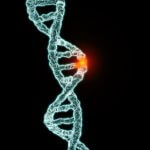
Numerous pathologies associated with aging due to telomerase mutations
The study of human diseases associated with mutations in telomerase components was the starting point for the discovery of the limiting role of telomeres on longevity and the impact of telomerase on aging.
In previous articles (see: Telomeres: at the heart of the ageing process), it was mentioned that telomere length could predict the onset of replicative senescence, a permanent state of cycle arrest. Alterations in telomeres are then associated with a decrease in cell metabolism. The accumulation of this type of cell in an organism would then lead to the manifestation of age-related phenotypes in the form of various pathologies [1].
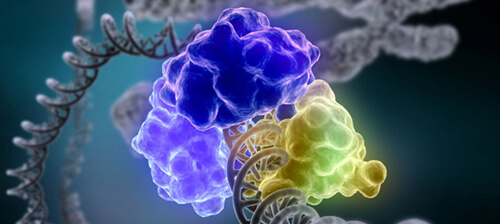
Cardiovascular diseases
Heart failure is one of the major causes of premature death in the elderly. Researchers have therefore studied the link between telomere shortening, which accelerates with age, and the development of heart problems. They analyzed heart function in mice whose telomerase gene was knocked out in embryonic stem cells. In several generations of these TERC (-/-) mice, a significant decrease in life expectancy was observed due to telomere shortening, which is thought to be coupled with a decrease in cell proliferation, an increase in apoptosis and hypertrophy (excessive increase in the volume of cardiac muscle cells) [3]. In response to these effects, ventricular dilation, thinner vessel walls and cardiac dysfunction have been observed [3].
Thus, the accelerated rate of telomere shortening due to telomerase malfunction is associated with age-related diseases such as cardiovascular disease. In addition, other studies have shown a correlation between telomere shortening and premature death due to cardiovascular disease or infection [4]. Therefore, based on the hypothesis that there are problems in the regulation of telomerase in humans during aging, all of this information could pave the way for innovative preventive therapies against the onset of these cardiovascular diseases.
Dementia and cognitive disorders
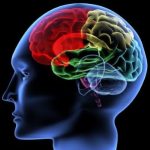
Researchers have shown that there is a correlation between telomere shortening and the onset of mental disorders: increased perceived stress, development of cognitive disorders and depression [5]. In addition, in people with accelerated telomere shortening due to telomerase dysfunction, the development of schizophrenia and mood disorders has also been observed [6]. These different brain disorders, which frequently develop with age, confirm the central role of telomerase and telomeres in the aging process.
Poor cell renewal and tissue breakdown
Among the pathologies associated with TERC mutations are diseases that lead to poor cell renewal. This is, for example, the case of dyskeratosis congenita, also called telomeropathy. Indeed, it manifests itself by a very rapid degradation of the telomeres. Although the clinical signs are numerous, the most severe disorders are: bone marrow aplasia (depletion of bone marrow), neutropenia (decrease in the quantity of certain white blood cells, neutrophils), thrombocytopenia (decrease in platelets), pulmonary fibrosis, global immune deficiency and the occurrence of cancer. There is currently no specific treatment for this disease, except for hematopoietic stem cell transplantation, which seems to have positive effects [2].
These mutations in telomerase components contribute to the degradation of the body at all levels: poor cell renewal, disruption of the body's protective and repair systems, tissue degeneration, etc. [2]. There are many associated pathologies. There is aplastic anaemia, which is characterized by a low number of red blood cells in the blood, and idiopathic pulmonary fibrosis, a fatal disease characterized by scarring of the lungs leading to respiratory disorders.
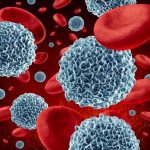
The origin of telomerase dysfunction and accelerated aging
While the effects of these telomerase mutations vary greatly from one individual to another, they are commonly associated with defects in cell renewal and tissue regeneration. They contribute to the development of phenotypes comparable to the signs of aging.
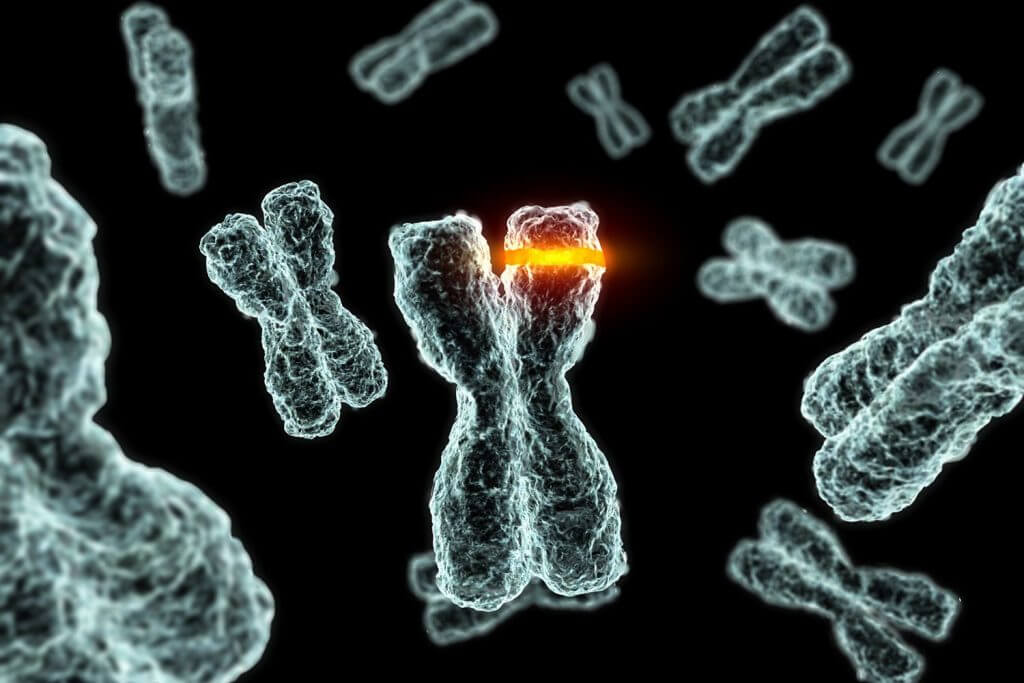
Telomeres are essential for maintaining the cell cycle. However, while it has been shown that a dysregulation of telomerase enzyme activity can accelerate aging, an overexpression of this enzyme could induce excessive cell proliferation and thus potentially increase the risk of developing tumors [2]. Therefore, with regard to future therapeutic avenues, it would be interesting to move towards targeted treatments. Telomere therapy targeting only stem cells would address the problem of cell renewal with age without the risk of inducing cancer in the whole body.
SOURCES:
Katidja Allaoui on http://www.longlonglife.org/
Sources:
[1] Chatterjee, S. (2017). Telomeres in health and disease. Journal of oral and maxillofacial pathology: JOMFP, 21(1), 87.
2] Blasco, M. A. (2007). Telomere length, stem cells and aging. Nature chemical biology, 3(10), 640-649.
3] Leri, A., Franco, S., Zacheo, A., Barlucchi, L., Chimenti, S., Limana, F., ... & Blasco, M. A. (2003). Ablation of telomerase and telomere loss leads to cardiac dilatation and heart failure associated with p53 upregulation. The EMBO journal, 22(1), 131-139.
4] Cawthon, R. M., Smith, K. R., O'Brien, E., Sivatchenko, A., & Kerber, R. A. (2003). Association between telomere length in blood and mortality in people aged 60 years or older. The Lancet, 361(9355), 393-395.
5] Canela, A., Vera, E., Klatt, P. & Blasco, M.A. High-thoughput telomere length quantification by FISH and its application to human population studies. Proc. Natl. Acad. Sci. USA 104, 5300-5305 (2007).
6] Teyssier, J. R., Ragot, S., Donzel, A., & Chauvet-Gelinier, J. C. (2010). Telomere length in the cortex of patients with depressive disorders. L'Encéphale, 36(6), 491-494.
*https://planet-vie.ens.fr/article/1813/invalidation-gene-knock-out
